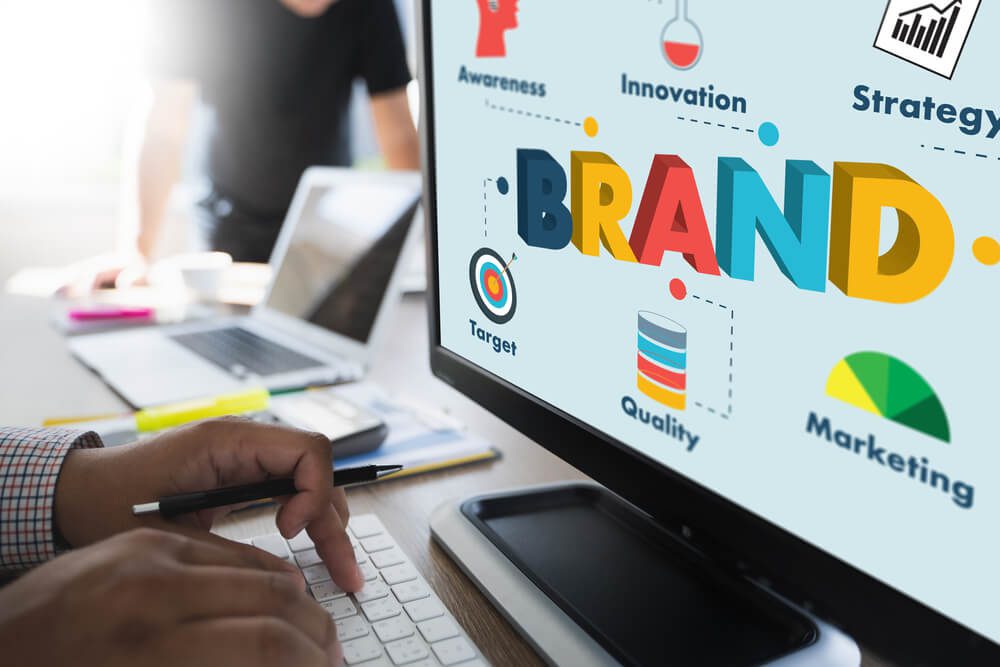
Balancing Brand Strategy With Revenue Goals
A solid brand identity is one of your best company assets, but it is only effective if it generates profits and cash flow. How do you do it? A fractional CRO aligns your branding strategy with revenue goals.
This article discusses the various fractional sales management techniques this part time C-suite executive performs. It also tackles the following:
- Definition of branding, including its key components.
- Different ways a branding strategy drives revenues.
Marketing experts, such as fractional CSOs, help you build a cohesive revenue-driven plan. This blog post teaches you how to be a collaborative partner.
Learn the fundamentals of effective branding below. Let’s go!
What Is a Branding Strategy?
Branding is creating a unique name, image, and identity for a product, service, or business in consumers' minds. It has the following primary components:
| Attribute | Description | Examples |
|---|---|---|
| Brand name | The words or phrases used to identify a product or company and distinguish it from competitors. | Nike, Google, and WebMD |
| Visual identity | The visual assets, such as color palettes, fonts, symbols, and images related to the brand. | - McDonald’s golden arches - Apple’s “Think Different” slogan - Black & Decker’s Avenir black font |
| Voice and messaging | The style and tone used in communications to convey a consistent brand personality. | - Old Spice’s over-the-top humorous and sarcastic ads that catch attention and convey confidence. - Wendy’s cheeky, fun, and conversational voice on social media to appeal to younger generations. |
| Brand positioning | Defines how a brand is different from competitors and why consumers should choose it over other options. | - Volvo positions itself as the safest vehicle brand with its tagline, “For Life.” - Coca-Cola associates the brand with joy and optimism. Advertising campaigns link drinking Coke with enjoying life’s small moments. |
| Promise | The commitment a company makes to deliver a certain customer experience and value. | - Domino’s hot, fresh pizza delivered in 30 minutes or less. - Amazon’s ultra-fast delivery and exceptional convenience, such as the 1-click checkout. |
As you can see, a company’s brand goes beyond a logo or tagline. In fact, it encompasses the entire experience a customer has with the business in five ways:
- Establishing meaningful connections with customers.
- Setting the company’s vision and marketing efforts.
- Differentiating the company from competitors.
- Considering the target audience and its motivations to purchase.
- Encapsulating the core identity of the company in a way that resonates with consumers’ desires and needs.
How Branding Drives Revenue

A solid brand identity, though, does not lead to profits. The way to do that is to align it with your revenue goals. Making them work in tandem creates a competitive advantage.
- Increased awareness and visibility. Brand-building initiatives, such as social media marketing and paid ads, introduce your company to a wider audience. It helps you discover new, untapped, or underserved markets with vast revenue potential.
- Improved customer perception. Consistent branding that conveys the company’s strengths shapes how people view it. A strong, positive brand image fosters trust and convinces customers that the product or service is the best choice.
- Higher customer lifetime value. Loyal customers who connect with the brand tend to purchase more frequently and have a longer retention. Their lifetime value expands, translating into higher, more stable sales.
- Premium pricing capabilities. A differentiated brand reputation allows businesses to charge a price premium higher than competitors.
- Cost savings. Increased customer awareness and affinity lower acquisition and conversion costs. Positive word-of-mouth also amplifies reach.
The Starbucks Brand-Revenue Analysis
Starbucks is one of the companies that has successfully balanced its branding and revenue objectives. First, it has established itself as the “third place,” a space where people can relax and connect while commuting between home and work.
Its store design incorporates plenty of wood and seating accommodations, such as couches. Some even try blending into the area’s culture to make the environment more accommodating and comforting.
Starbucks also plays soothing music to make the experience even more immersive. Additionally, it provides amenities beyond coffee. These include free internet, power outlets, and reading materials.
This coffee brand is famous for its exceptional customer service. Baristas write your name on cups and even customize your drinks. Do you have a pet? They offer pup cups for them. In 2008, it launched My Starbucks Idea to create a community culture among its customers.
As their customer profiles change, they adapt. For example, they have built a robust mobile app that works seamlessly with the brand’s other digital channels. It now emphasizes its sustainability efforts in its marketing materials. Most of all, it constantly innovates, offering new flavors they taste-test in select stores.
How do all these steps relate to Starbucks’s revenues?
- They gave birth to popular drinks, such as the pumpkin spice latte. This seasonal drink brings in over $800 million.
- The cafe expanded its offerings to include packed coffee beans and even music CDs. These allow customers to experience Starbucks even at home. As it opens more stores globally, it sells collectible mugs.
- Cultivating an emotional connection and community encourages repeat visits.
- The “third place” experience allows Starbucks to charge above average prices for its high-quality drinks and food.
- The amenities, customization, rewards program, and mobile app help drive increased spending per transaction.
Overall, the branding and business goals reinforce each other for success.
Three Strategies to Align Branding with Revenue

Despite the significant benefits of aligning branding with revenue objectives, many businesses still need help with it. The reason is simple: branding often focuses on emotional connections. Revenue programs use concrete steps to hit growth targets.
A disconnect exists between these two concepts. Fractional chief revenue officers (CROs) close the gap using these three strategies:
1. Improve the Collaboration Between Sales and Marketing
Operating in silos usually results in inconsistent messaging. It contributes to fragmented data and missed opportunities as well. Fractional CROs strengthen the teams’ collaboration through the following:
- Schedule regular meetings to coordinate activities. Use these periods to develop cohesive campaigns.
- Allow each team to brief others on their upcoming initiatives and strategies.
- Identify any conflicting timelines and messaging across the groups and openly address them.
- Establish core brand pillars and messaging principles that all external communications should follow.
- Leverage collaboration tools to maintain transparency between meetings. These include shared calendars, centralized documentation, and project management platforms.
- Create an approval process for external communications that touch these departments.
- Hold each other accountable for meeting established guidelines and timelines through friendly oversight.
With tight alignment between these core functions, companies create unified customer experiences that accelerate growth.
2. Deeply Study the Market
Strong branding is invaluable for compelling purchase decisions. However, it must evolve with changing consumer expectations. Ongoing market research provides the insights needed to refine branding strategies over time.
Popular research tactics include surveys, focus groups, and customer interviews. You can also look into market trends and study competitors through analytics. From the data, a fractional CRO guides you in:
- Refreshing the key components to match current customer profiles while retaining the brand’s DNA.
- Testing new messaging and assets to determine what resonates most.
- Auditing marketing and sales materials for consistency.
- Creating flexible processes to quickly modify branding across channels.
- Fostering a forward-thinking culture to stay ahead.
Market research helps your brand stay relevant. It lets you obtain information to craft compelling, customer-centric content. It moves your marketing campaigns and vision in the right direction.
3. Pick the Right Key Performance Indicators (KPIs)
Tracking relevant KPIs quantifies the impact of branding efforts on revenue goals and optimizes them in accordance. It also offers the following benefits:
- Makes branding strategies less subjective by providing hard data on financial outcomes.
- Directly ties branding activities to business results to reveal what works.
- Helps market leaders, such as fractional CROs, prioritize campaigns, assets, and channels.
- Promotes a more appropriate budget allocation to support business goals.
- Encourages swift adjustments of branding initiatives when necessary.
- Secures executive buy-in for adequate investments.
- Enables branding strategy continuity amid changes.
Usually, a business tracks over 15 KPIs. These include the following:
| KPI | Definition | Metrics |
|---|---|---|
| Customer lifetime value | Total revenue contributed by a customer over their entire relationship with a company. | Average order value, purchase frequency, customer age, and retention rate |
| Lead-to-customer ratio | Percentage of leads that convert to paying customers. | Marketing-qualified leads, sales-qualified leads, and new customers |
| Landing page conversion rates | Percentage of visitors who convert into leads on landing pages. | Page visits, form submissions, bounce rate, and exit rate |
| Marketing revenue attribution | Amount of revenue influenced by marketing efforts. | First touch, multi-touch attribution, and campaign return on investment (ROI) |
| Digital marketing ROI | Returns from various organic and paid digital marketing activities. | Revenue attributed to digital marketing campaigns, campaign costs, and the number of leads or sales. |
Summing Up
A branding strategy that does not convert is an expense. Aligning it with your revenue objectives transforms it into a worthwhile investment.
Bridging the gap between revenue goals and branding requires dismantling rigid department silos. It also demands extensive market research and tracking of the right set of KPIs. Only then can your business develop and refine an agile, relevant, profit-oriented brand plan.
Do you need help in this area? Contact Digital Authority Partners (DAP) to schedule a free consultation with an experienced fractional CRO.
Want To Meet Our Expert Team?
Book a meeting directly here




